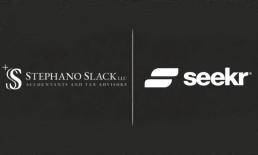Headed into the holiday season, all thoughts turn to fitness.
Or after the innumerable cakes at the office, egg nog, festival feasts and so on … they should.
New Year’s brings with it the inevitable resolutions, and the inevitable looking around for a gym to accommodate the perennial goal of getting back into shape, post-holiday gluttony.
Ah, but where to start? Where do the selfie-conscious go when it’s time to shape up, particularly when there is no regimen in place yet to follow? How to decide what exercise to embrace? And, once decided, how to stick to it, with stick-to-itiveness?
Here’s where trial and error come into play, and where a sense of community also helps to reinforce the notion that when it comes to exercise, reinforcement is key.
Advertisement: Scroll to Continue
As a business proposition, the gym/studio model has its lures and pitfalls. A fitness company rents or owns space, stocked with everything from weights to bikes to rooms devoted to yoga, meditation or hip-hop dance workouts. But if spaces go unfilled – and here we mean not just the literal space and equipment itself, but the spaces reserved for classes – then money is wasted. The unsold inventory at a Pilates studio in midtown Manhattan has bottom-line impact no different than unsold inventory on a retailer’s shelves or on an airline’s flight. Emptiness hurts margins.
Against this backdrop, ClassPass seeks to match the fitness conscious with the fitness companies. The subscription-based model lets users in large and mid-sized cities across the United States buy packages of classes for local studios and gyms.
By offering a platform for those seeking new classes and experiences – who use the app to see what is available and book open spots at those classes that might otherwise go unfilled – friction at the commerce level is reduced.
In an interview with PYMNTS’ Karen Webster, Sam Hall, chief product and technology officer of ClassPass, offered some updates on what the fitness subscription service is doing to bring workouts to the digital age.
ClassPass subscribers get access to a certain number of classes per month and book at various studios close to home. In true “mixing it up style,” as Webster and Hall discussed, that could mean boxing on a Tuesday and barre class on a Thursday.
Prices vary by city, with membership packages defined by the number of classes per month. A monthly 10-class package in New York City, for example, costs $135.
Hall told Webster that a sense of community helps power the business model, as over half of the members who sign on have never been to a fitness studio before. He said that of the company’s members, 70 percent have discovered new studios on the platform, and 90 percent find new classes. ClassPassers generally go with friends, or may convince them to sign up for memberships, too, and the mutual motivation keeps them coming back to try new fitness routines. Said Hall, especially in the millennial age, “friends help keep people accountable.”
The millions of reservations that pour in annually enable the studios to spot trends early, said Hall (boxing is hot now, and hot yoga is, well, hot, too), which then helps the studios plan classes.
As for those studios, he said “we do a lot of things to make sure the studio is maximizing its revenue.” One way to do this: Earlier this year, ClassPass began testing variable pricing, with credit currency in place that lets members take classes at any of the 8,500 locations in the company’s network. Less popular classes cost less, while the converse is true for more popular ones that fill up quickly. There’s also the partnership with Blink Fitness announced in September, where a co-membership option allows ClassPass members to access Blink locations as a supplement to existing workout routines.
With $70 million in funding recently secured, the company is now taking the leap into the living room – literally.
Earlier this month, ClassPass announced ClassPass Live, billed as a live digital fitness experience. Hall told Webster the digital offering builds on the idea that the ClassPass experience, available thus far in 49 cities, should be accessible to everyone. The service will cost an additional $10 for existing ClassPass subscribers or $15 on a standalone basis.
Hall noted a few features of the streaming service (available across devices such as TVs, smartphones and tablets), set to debut at the beginning of 2018, key among them heart rate training. Through heart monitors shipped by the company to the user, “instructors will be able to see how well you are doing, whether you are working hard enough, and they can issue encouragement right there, live.”
There’s also an additional element of interaction – call it peer encouragement (or, we wonder, even pressure?). Consider the fact that the service, currently in beta testing, will also let users see everyone else in the live-streamed class, and their own via heart rate targeting. This, said Hall, “fosters a sense of community” – and the service also lends itself to getting people to exercise who might otherwise find it hard to get to the studios in a physical setting. And the subscribers have access to workouts that might previously have been available only to people in larger cities.
The digitally streamed classes, discussed Webster and Hall, offer another example of extending the community aspect of fitness into the home. This time the community, so to speak, comes to the individual who may not be able to get to a studio on a regular basis, or who may be absorbed with the day-to-day challenges of raising children, or who perhaps works from home.
Hall said, “we did a lot of in-home research with people using digital workouts.” He said that it is about making them exciting, “making them accountable and giving you that sense of community in a short half-hour workout that will solve a lot of the problems” that people have with staying true to fitness goals well beyond the New Year.




